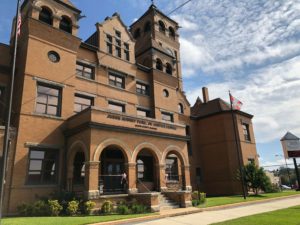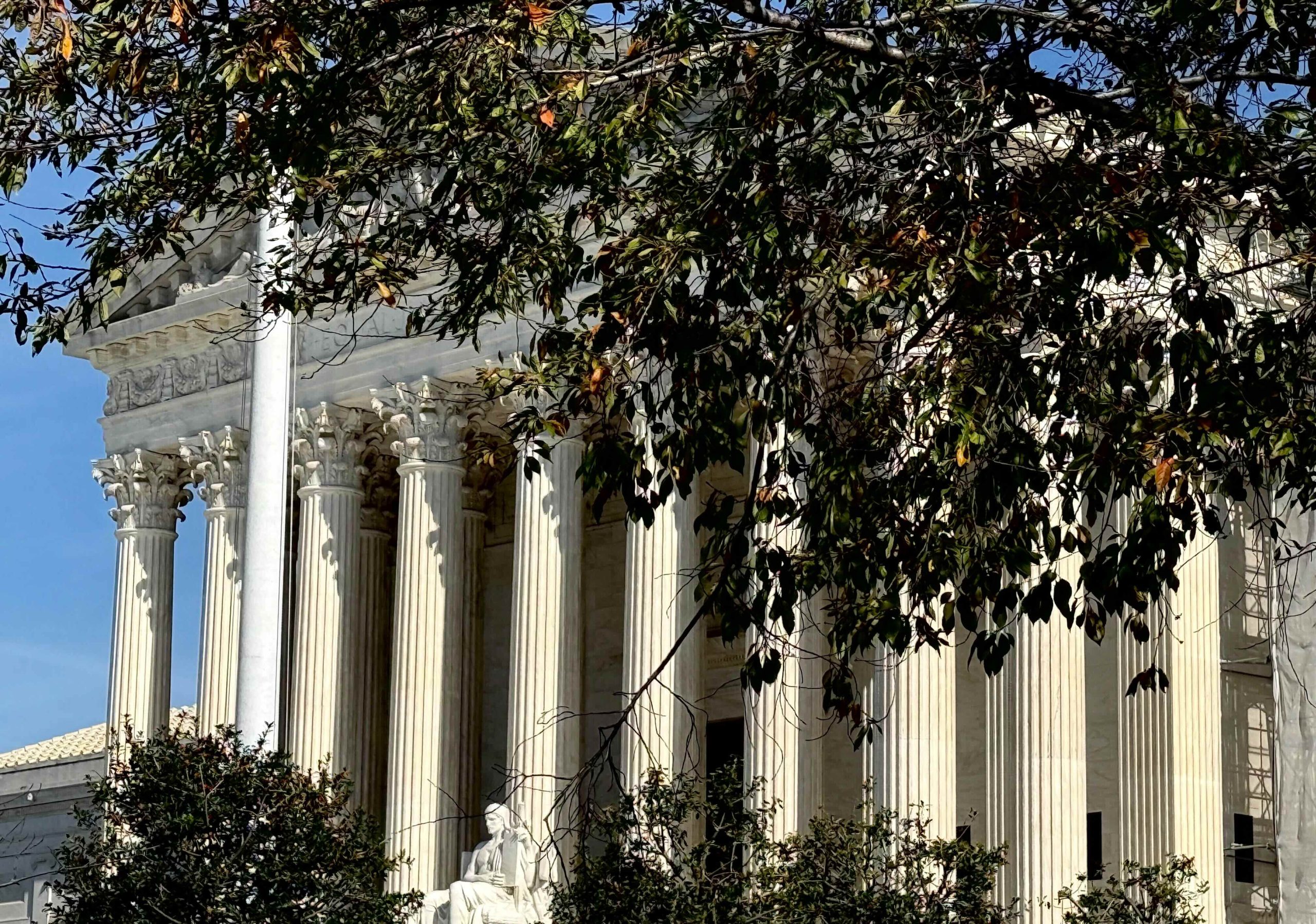Navigating the waters of the new term
A VIEW FROM THE COURTROOM
on Oct 3, 2022
at 9:53 pm
A View from the Courtroom is an occasional series offering an inside look at oral arguments and opinion announcements unfolding in real time.
It is the first day the court has welcomed the general public into the courtroom since early 2020. The courtroom will be pretty full today, but not knee-to-knee full, as it was Friday for Justice Ketanji Brown Jackson’s investiture.
The lectern and counsel tables have been returned to their normal positions close to the bench, after last term, when they were pushed back to the back of the bar section. That left a large gulf that looked a bit like the designated dance floor at a wedding.
With the public gallery populated (again, not completely full) of regular people, the two groups that sat there last term are back to their normal spots. One is the justices’ law clerks, who are once again relegated to the alcoves on the right side of the courtroom. The other is the press, who are back in their regular section on the left (side of the courtroom, that is). Besides the Supreme Court “hard pass” holders who could attend in person last year, we are now joined by some “day pass” reporters, including some who cover the court regularly but for one reason or another do not have hard passes.
One of those making his return to the courtroom for the first time since 2020 is a reporter who made quite a splash last May 2. Josh Gerstein of Politico, with his colleague Alexander Ward, broke the story of the leaked draft opinion in Dobbs v. Jackson Women’s Health Organization.
Gerstein was actually here on Friday for the investiture, but the courtroom was so packed then that it seems doubtful any member of the court noticed him. Today, he is seated in the third row of the press section. He will stand out a little more when he stays for the second argument today while most reporters file out after the marathon, two-hour argument session in the first case.
I was once perusing the archives of the late Justice William Brennan when I came across a letter that Gerstein wrote to him as a high school student, commending the justice for his dissent in support of student journalists in the 1988 case of Hazelwood School District v. Kuhlmeier. Gerstein tells me he received a thank-you letter from Brennan. I doubt any current justices will be sending Gerstein any thank-you letters.
On the other side of the courtroom from the press section is the VIP section, where Jackson’s parents, Johnny and Ellery Brown, take seats this morning. Jane Roberts and Ashley Kavanaugh are also here today. At some point, retired Justice Anthony Kennedy will slip in to the first row of that section to watch the argument in Sackett v. Environmental Protection Agency.
When the justices take the bench, Chief Justice John Roberts formally closes out October Term 2021 and opens the 2022 term. He recognizes Jeffrey Minear, the counselor to the chief justice since 2006, who announced his retirement last month. And the chief breaks some news: U.S. District Judge Robert Dow, who serves in the Northern District of Illinois, will succeed Minear beginning Dec. 5.
Justices Sonia Sotomayor and Elena Kagan are wearing masks today. Only a few people elsewhere in the courtroom are doing so.
Roberts seems pleased to return to another tradition: Supreme Court Bar admissions in the courtroom. Groups from New York Law School (not to be confused with New York University Law School, I am reminded whenever I interview a professor from the former) and the New York City Law Department are sworn in.
And then the court begins arguments in the Sackett case, about the proper test for determine whether wetlands are “waters of the United States” under the Clean Water Act.
Amy Howe has the main account here of an at times lively, at other times dragging argument in a case that has been here before. There are frequent mentions of Kennedy’s concurring opinion in a relevant case, Rapanos v. United States, and the retired justice remains stone-faced with each one.
Jackson asks her first question barely 10 minutes into the argument, and she presses the lawyer for the Sackett family, Damien Schiff, with follow-ups. When Schiff says a particular passage of the Clean Water Act is “unenlightening,” Jackson says, “Let me try to bring some enlightenment to it by asking it this way.”
Several justices bring some personal perspectives to the case. Regarding the key concept of “adjacency” in the case, Kagan notes that she grew up in a New York City apartment building. “If I say there are two adjacent apartment buildings, do they have to be touching each other?” she asked.
Justice Clarence Thomas, asking whether any bodies of water were excluded from the statute, notes that he grew up “in low country Georgia and you had standing water. That was normal.”
Justice Amy Coney Barrett notes that she grew up in New Orleans. “The whole thing is below sea level,” she says, adding that “we have no basements, because you dig far enough in anybody’s yard, you hit water and all of that runs into Lake Pontchartrain and the Mississippi River navigable waters.”
After Schiff’s main argument, Principal Deputy Solicitor General Brian Fletcher faces a tide of skeptical questions on the government’s view that a patch of land owned by the Sacketts is covered by the statute. Then, nearly two hours after the start of the argument, Schiff returns to the lectern for his rebuttal.
He is soon interrupted by the newest justice, who seems unaware that the court has been trying to leave rebuttal time protected from such intrusions.
“Counsel, can you just speak to the representation that was made about the Sacketts’ property in particular…” Jackson begins, one of five questions she peppers Schiff with.
Roberts hides any concern he may have, but seems to be sending a signal to his new colleague when he tells Schiff, “We’ll give you an extra minute for your rebuttal.”
Jackson’s active involvement in her first argument evokes her comments from an event at the Library of Congress on Friday, after her investiture. “I have a seat at the table now,” she said then. “I have a seat at the table now, and I’m ready to work.”






